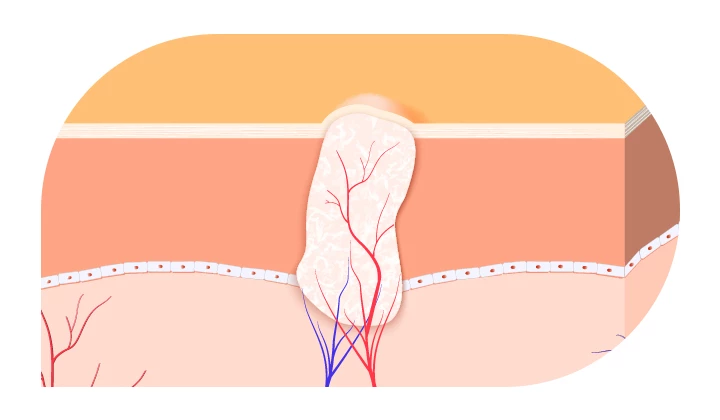
What are warts?
There are many types of skin warts: the most frequent are the common and plantar ones.
Warts are benign and frequent skin lesions caused by human papilloma virus (HPV) infection

How to recognise them?
Common warts
Common warts are the most prevalent type (about 70%), followed by plantar and flat warts. They have an irregular surface, rounded shape, variable size and rough appearance, with black dots at their centres. They mainly effect the backs of hands and fingers and nail contours. More rarely, they can occur on palms, elbows and knees.
Simple plantar warts
These warts are very common ones. They have a yellowish colour and are rough, thick and flaky. They often are found on the soles, heels and toes. Plantar warts are deep-rooted and usually cause pain when walking.
Mosaic plantar warts
These warts are less common than simple plantar warts, and form mosaic-like clusters. They may often appear on the soles of feet in the form of several whitish patches positioned close to each other. They are flat and tend not to hurt while walking.

Prevention and remedies
How to deal with and solve the problem of warts in a short time? Here are some tips, useful for the whole family, to prevent and treat these annoying skin infections.
Duofilm is a medicine containing salicylic acid and lactic acid. Do not use Duofilm on the face or anogenital regions. Do not use in children under two years of age. Talk to your doctor before using this medicine in children aged 2 to 12 years. Consult your pharmacist. Read the instructions carefully. If symptoms persist, see your doctor.



